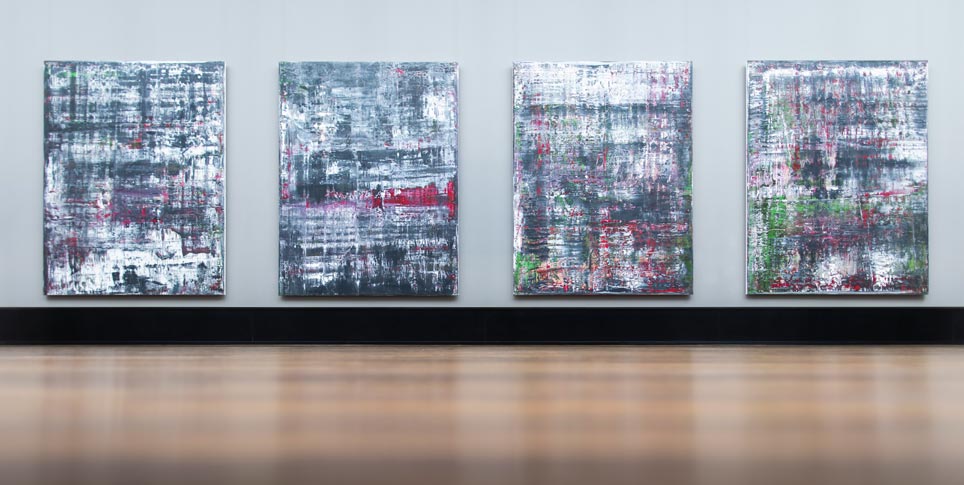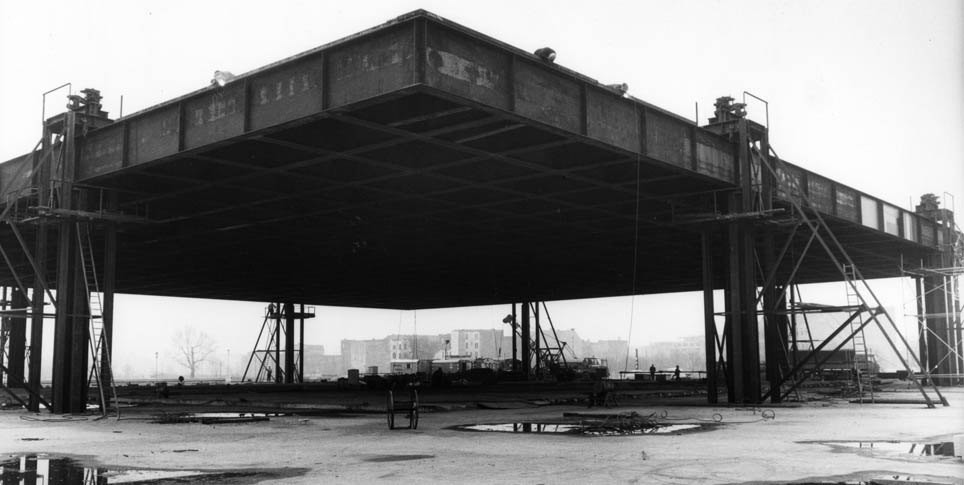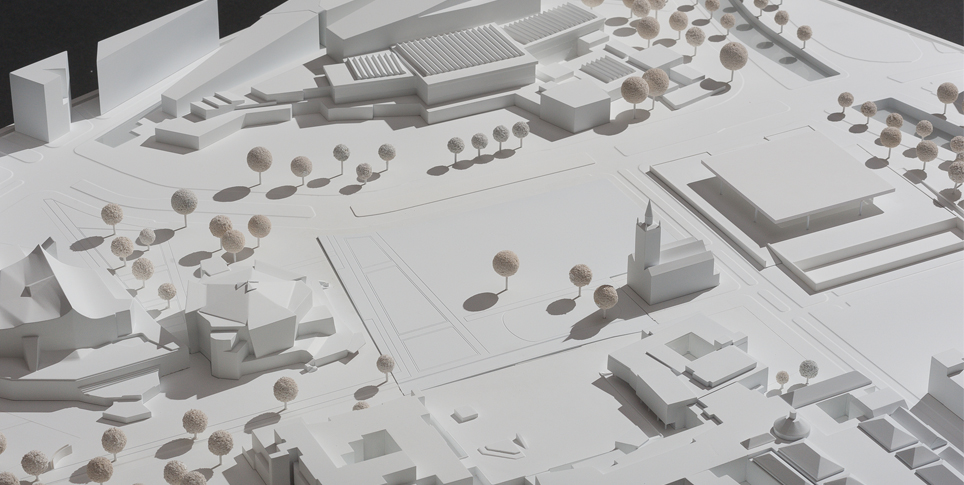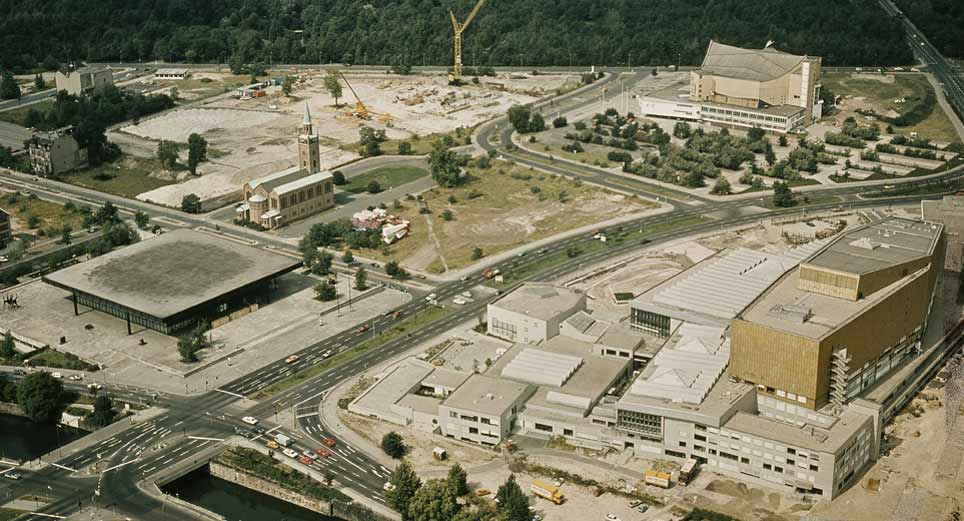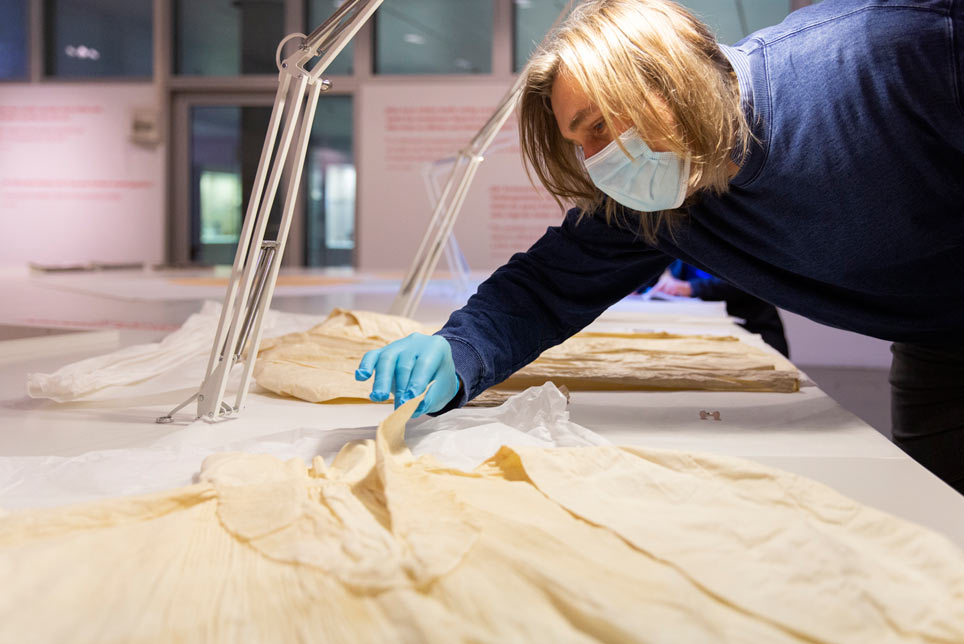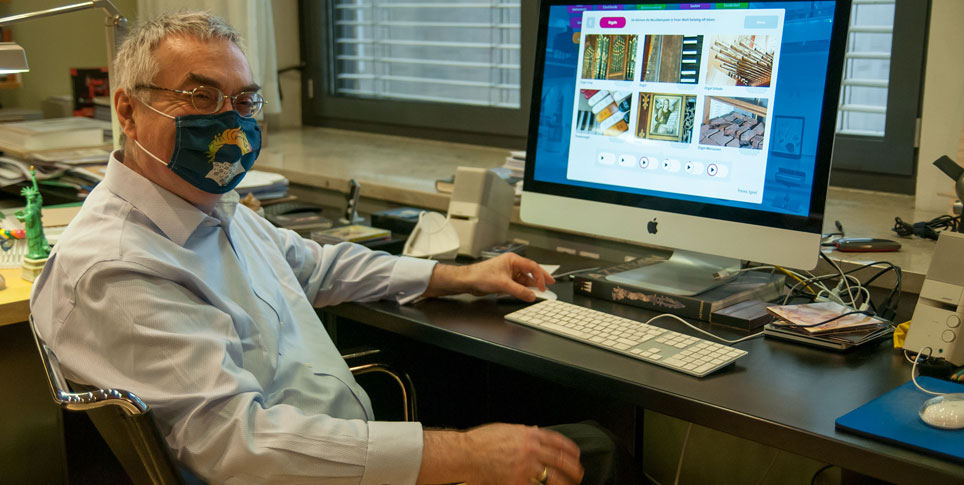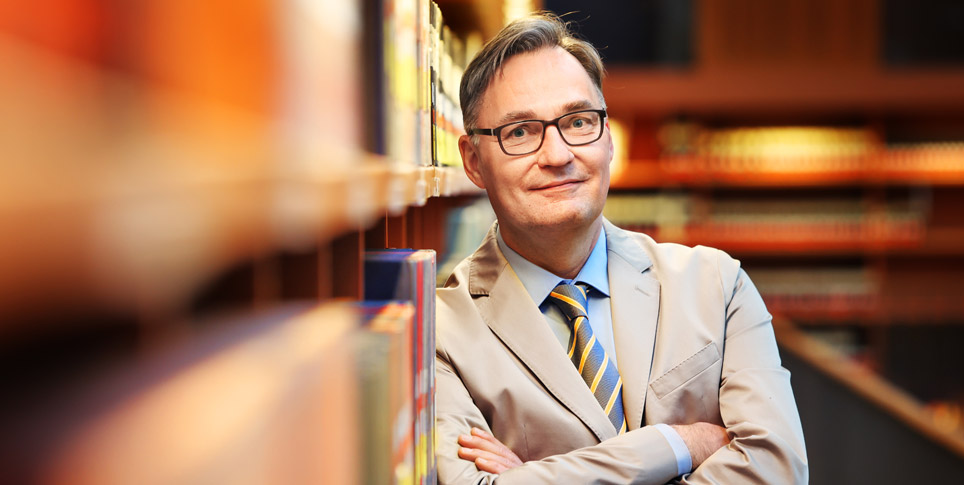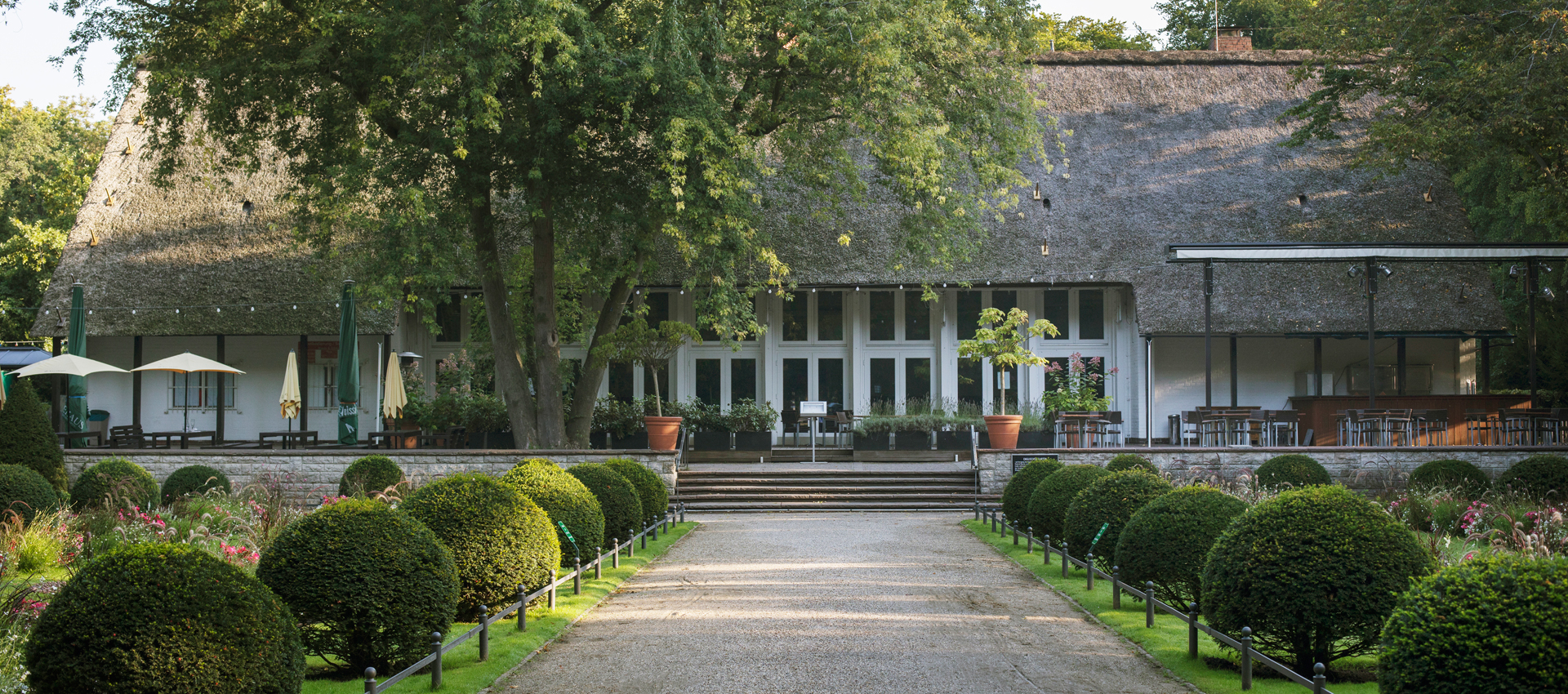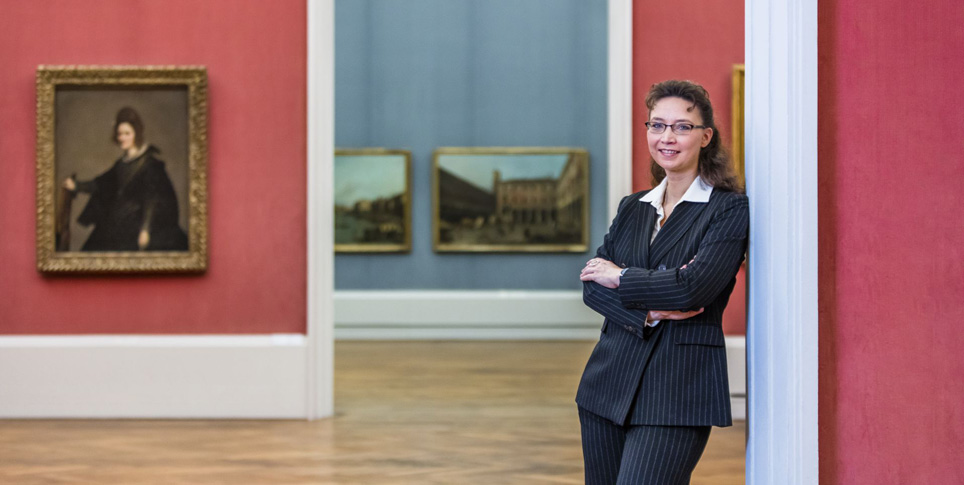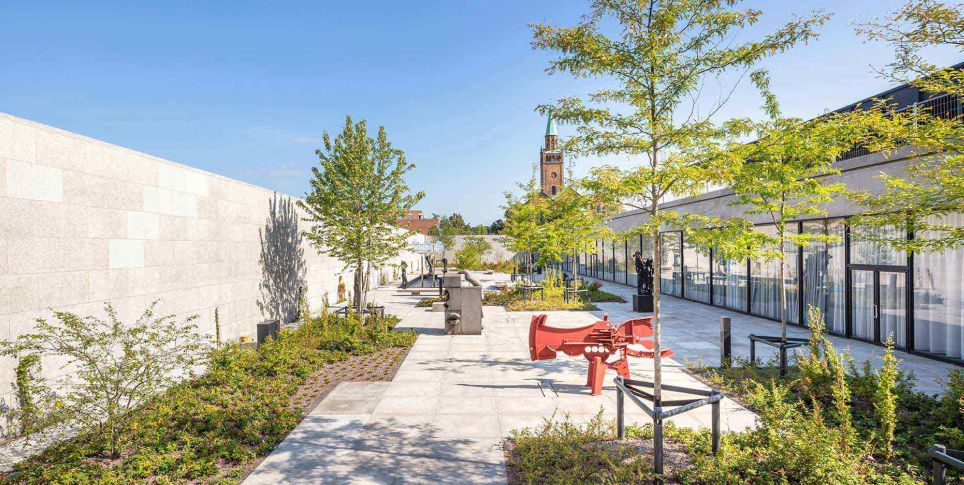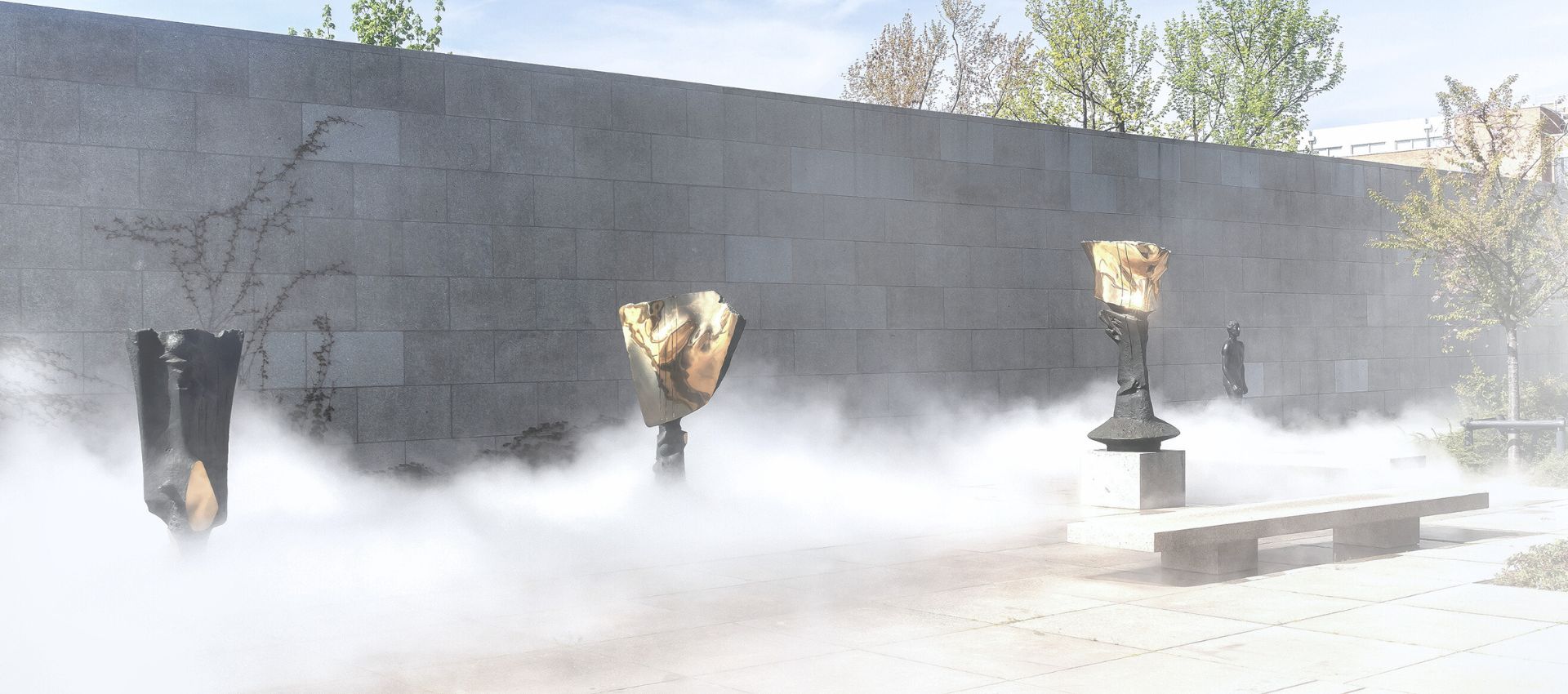Construction has only just begun on the Museum des 20. Jahrhunderts, but the new building already has a Gerhard Richter Room.
The painter Gerhard Richter and his family have decided to present the Nationalgalerie with a permanent loan consisting of more than 100 works from various phases of the artist's career. They include individual pieces such as "Squatters' House" (1989), important glass and mirror works like "Mirror, Grey" (1991) and series such as "4900 Colours" (2007) and "Strip" (2013).

From left: Stephan Frucht of the Prussian Cultural Heritage Board of Trustees, Federal Commissioner for Culture and the Media Monika Grütters, SPK President Hermann Parzinger, Joachim Jäger, the acting director of the Nationalgalerie, Gerhard Richter's daughter Ella Maria, and Ralph Gleis, the director of the Alte Nationalgalerie, in front of the Birkenau cycle. © SPK / photothek.net / Xander Heinl
An agreement governing the loan will be signed shortly by the GERHARD RICHTER KUNSTSTIFTUNG and the Stiftung Preussischer Kulturbesitz (Prussian Cultural Heritage Foundation). The central work of the Richter Room will be the four-part Birkenau cycle, which was created by the artist in 2014. It addresses the subject of the Shoah in large, abstract paintings that only gradually reveal their horrifying content. These are currently on display at the Alte Nationalgalerie until October 3. "The reason I set up a foundation was the four Birkenau pictures," says Richter. "I didn't want to put them on the art market." And so it happens that the Museum des 20. Jahrhunderts (Museum of the 20th Century) will work with an artist whose oeuvre would be inconceivable without the context of German history, an artist who has repeatedly taken the upheavals of the previous century as his subjects.
For Joachim Jäger, the acting director of the Nationalgalerie, there was never any doubt that Gerhard Richter's work had to be on permanent display, especially in a city like Berlin. But a static presentation is not what he has in mind. Jäger intends to offer new and changing perspectives on the work. Interaction with contemporary artists is also desired. In 2023, a large portion of the works will be shown in the Neue Nationalgalerie. Three years later, they will move to the upper floor of the new building, the Museum des 20. Jahrhunderts.
